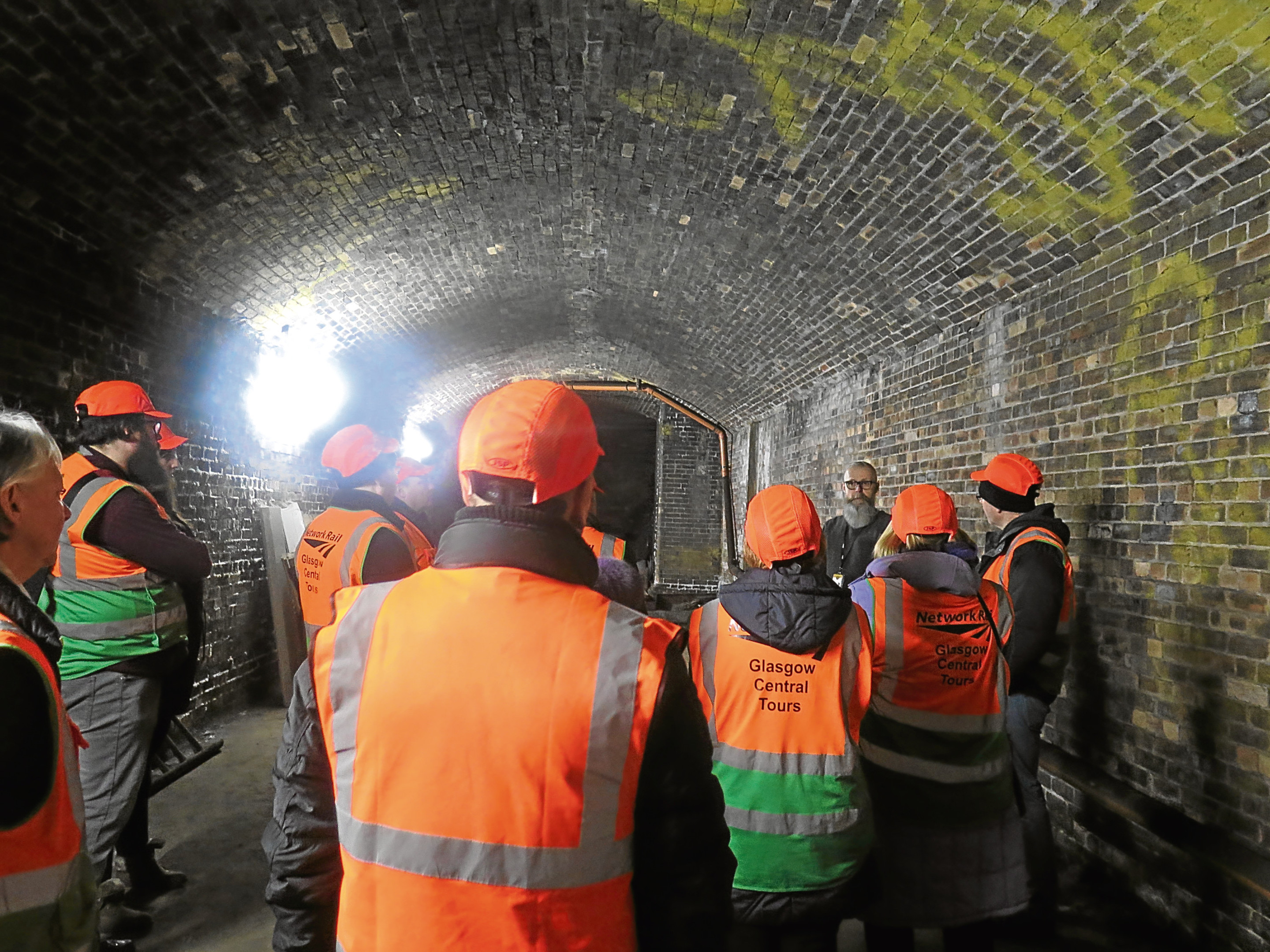
SINCE it first opened in 1879, Glasgow Central Station has seen plenty of changes.
With over 30 million people using it each year, the railway station is one of Britain’s biggest, and has had to be upgraded regularly.
What most of us never see, though, are the other levels hidden beneath its famous concourse. And they have many tales to tell.
Paul Lyons is the incredibly passionate guide on regular tours of these dark, spooky corners below the ground, and with nearly 2500 reviews giving them an astonishing full five stars, he must be doing something right!
He takes his guests down through three levels, describing what was once the village of Grahamston, removed to accommodate the huge station.
One of its main streets was Alston, and if you fancy the best gin and steak in the city, try the restaurant bearing its name, also below Glasgow Central.
As Paul explains, the station would have looked like a massive church at one time — full of candles, with women on their knees as if praying. They were actually in that position to begin burning the lice off soldiers getting off the train, back from the war.
As he also vividly describes, beneath today’s concourse, women would have to pull countless blankets from dead soldiers’ faces, until they recognised their own deceased fathers or brothers.
They would then have to pay someone to help them take the corpse away.
When he tells you such stories, it’s no wonder being below Glasgow Central feels sombre and eerie.
Paul also talks about the wider city, and one thing that angers him, especially after relating the tale of those widowed soldiers’ wives, is that Glasgow only has a handful of female statues.
That is something he intends to change, and he’s such a force of nature that you know he will succeed!
Paul has also found, and continues to find, artefacts from those days of yore.
At the moment, he has an incredibly rare makeshift wheelchair from the Great War, and one recent tour guest was in tears as he explained his father had been confined to one just like it.
One of the highlights of the tour is getting to the lowest level and setting eyes on the dilapidated and very spooky former Victorian station platform.
Ambitious man that he is, Paul’s next big target is to get a vintage steam train down here. When he does that, those reviews will need an extra star!
Paul also talks about the 30,000 Highlanders who came to the city en masse, as part of the second phase of the Highland clearances in the 1800s.
The first language was Gaelic, so not everyone knew English.
They would congregate under the famous bridge at Central, which is why it is known to this day as the Hielanman’s Umbrella.
Paul, who has had stints at London’s Euston and Kings Cross, has run these tours since 2014. He recalls being sent down here, to Central’s darkest corners, as a young man to collect files.
As the part they were stored in featured oversized rats that had made their way here from the nearby River Clyde, his personal memories are almost as terrifying as the war ones!
To learn more, book tickets and get a glimpse of the tour, visit glasgowcentraltours.co.uk

Enjoy the convenience of having The Sunday Post delivered as a digital ePaper straight to your smartphone, tablet or computer.
Subscribe for only £5.49 a month and enjoy all the benefits of the printed paper as a digital replica.
Subscribe